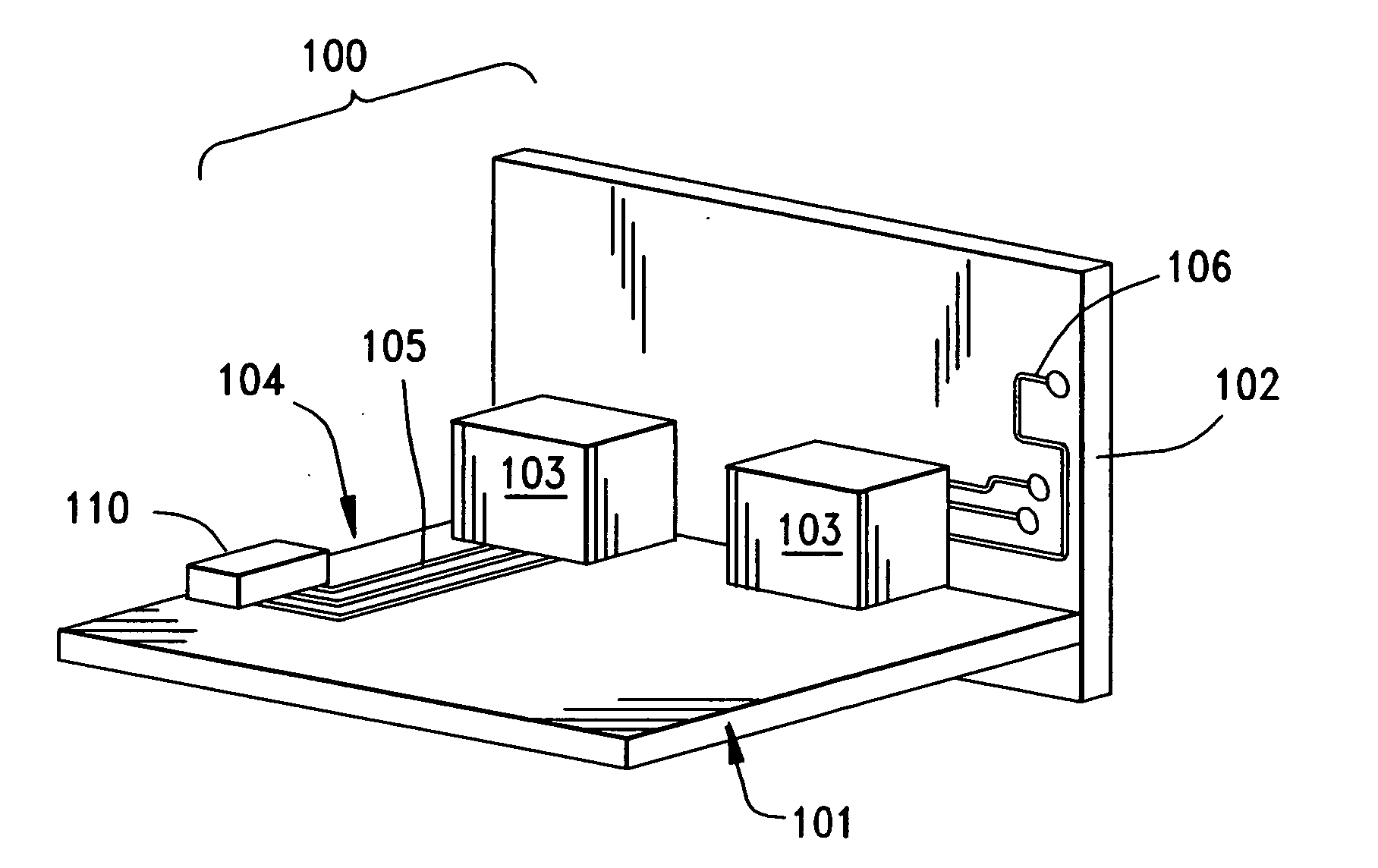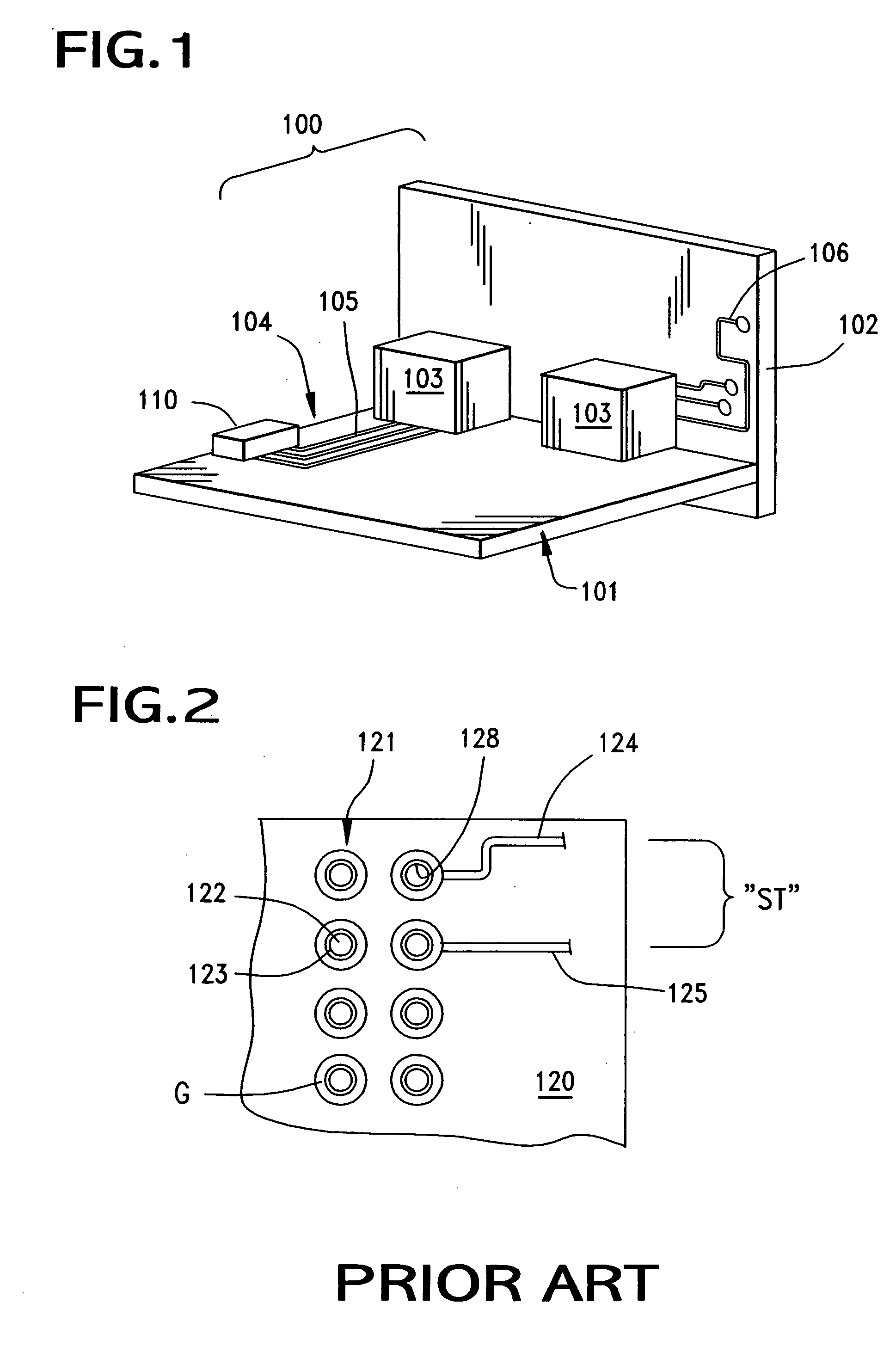Preferential ground and via exit structures for printed circuit boards
a printed circuit board and preferred ground technology, applied in the field of circuit board arrangement, can solve the problems of undesireable crosstalk between the signal paths of the transmission line or elecrical “noise”, affecting the integrity of electrically transmitted signals at high frequencies, and causing electromagnetic interference in the transmission lin
- Summary
- Abstract
- Description
- Claims
- Application Information
AI Technical Summary
Benefits of technology
Problems solved by technology
Method used
Image
Examples
Embodiment Construction
[0044]FIG. 1 is a perspective view of a backplane assembly 100 in which a printed circuit board, referred to herein as a “motherboard”101 is joined to a secondary circuit board 102 by way of one or more connectors 103. The connectors 103, as are known in the art, connect conductive circuits 104 which utilize conductive traces 105 disposed on a surface of the motherboard 101, to similar circuits 106 disposed on the secondary circuit board 102. These circuits 104, 106 typically lead to electronic components 110 that are mounted to the circuit board.
[0045] Cables may be used to connect the assembly 100 of FIG. 1 to another electronic assembly and these cables are but one form of an electronic signal transmission line. Other forms of such transmission lines may be incorporated in the circuit boards 104, 106 of the assembly and one such form may take the form of a plurality of conductive traces disposed on or within a plane, or layer, of the circuit board. An example of such a transmiss...
PUM
 Login to View More
Login to View More Abstract
Description
Claims
Application Information
 Login to View More
Login to View More - R&D
- Intellectual Property
- Life Sciences
- Materials
- Tech Scout
- Unparalleled Data Quality
- Higher Quality Content
- 60% Fewer Hallucinations
Browse by: Latest US Patents, China's latest patents, Technical Efficacy Thesaurus, Application Domain, Technology Topic, Popular Technical Reports.
© 2025 PatSnap. All rights reserved.Legal|Privacy policy|Modern Slavery Act Transparency Statement|Sitemap|About US| Contact US: help@patsnap.com



